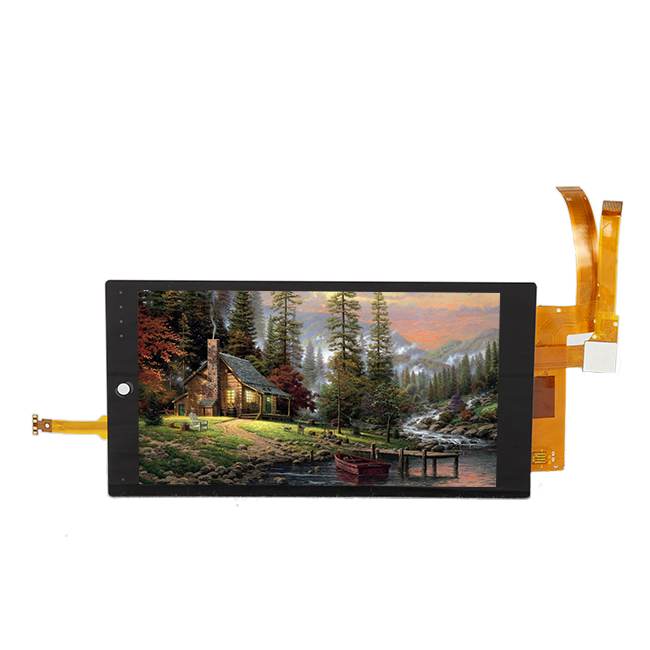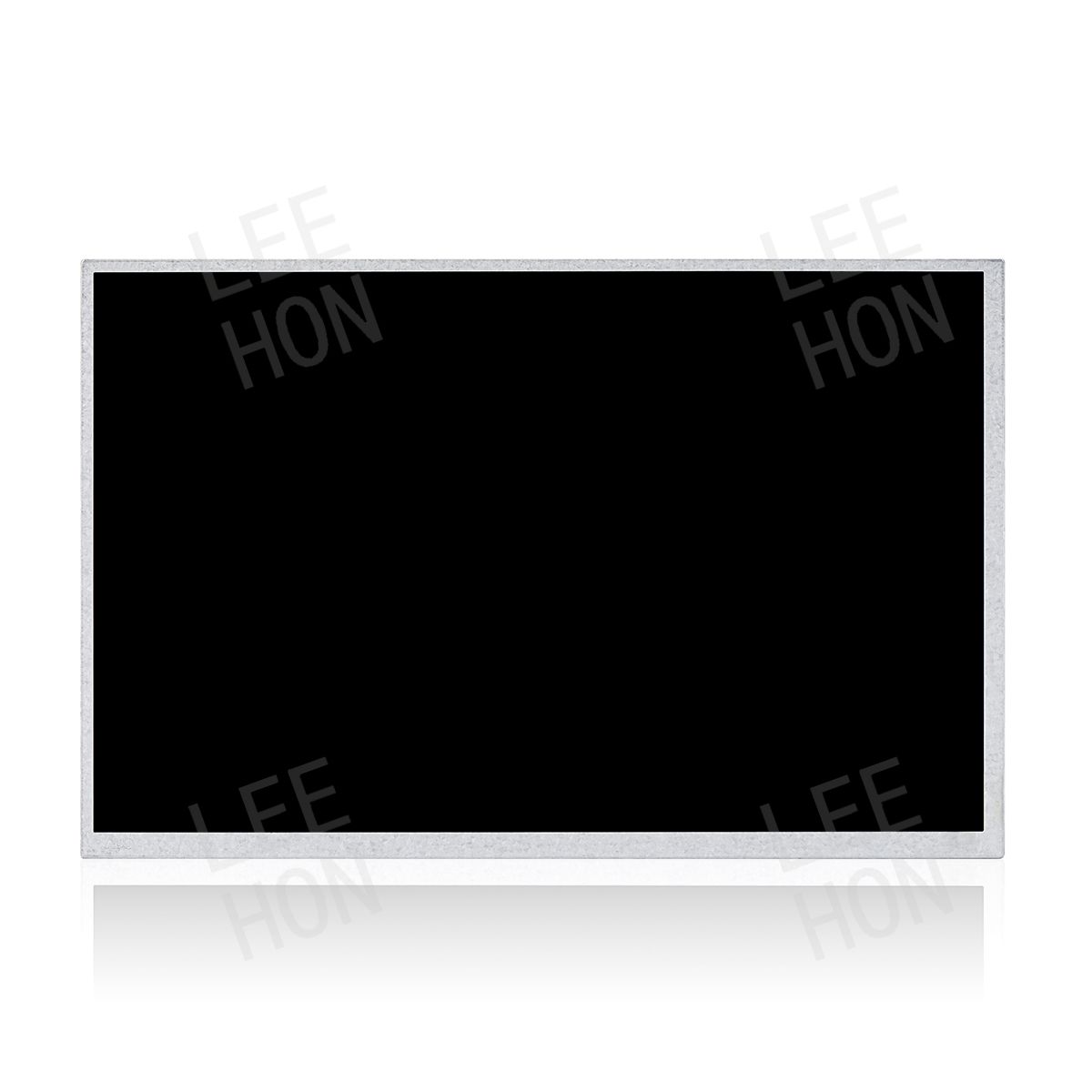How to choose the size of industrial LCD screen?
News 2025-03-06
In the design and integration of industrial equipment, the choice of LCD screen size not only affects display quality but also directly impacts operational efficiency, device compatibility, and the smoothness of the overall workflow. Unlike consumer-grade screens, the size adaptation of industrial LCD screens requires comprehensive consideration of environmental conditions, equipment functionality, human-machine interaction, and other factors. This article will provide a scientific and practical methodology for size adaptation, starting from the special needs of industrial scenarios, to help you find the most suitable screen size.

1. The Particularity of Industrial LCD Screens
1.1 The Complexity of Industrial Scenarios
Industrial LCD screens are often used in harsh environments (e.g., high temperature, high humidity, vibration, dust, etc.), so their size selection must consider the following characteristics:
- Durability: The screen must have a high protection rating (e.g., IP65 waterproof and dustproof) to ensure stable operation under extreme conditions.
- Visibility: It must maintain clear display under strong light (high brightness, anti-reflective coating) to ensure operators can easily read information under any lighting conditions.
- Compatibility: It must match the interface and installation space of the industrial equipment to avoid installation difficulties or functional limitations due to improper size.
1.2 The Relationship Between Size and Functionality
The size of an industrial LCD screen directly affects the user experience:
- Too small: It may be difficult to clearly display complex data or operation interfaces, potentially leading to operational errors or information omissions.
- Too large: It may exceed the installation space of the equipment or increase the operational distance, causing inconvenience and even affecting the overall aesthetics and practicality of the device.
2. Key Factors Affecting the Size Adaptation of Industrial LCD Screens
2.1 Equipment Functionality and Display Requirements
- Data display equipment (e.g., instruments and meters): Requires displaying real-time data, charts, etc. Recommended sizes are small to medium (7-15 inches), with resolution focused on clarity and readability. For example, an instrument monitoring production line status may need a 10-inch screen to display real-time data and trend charts, ensuring operators can quickly access critical information.
- Operation control equipment (e.g., HMI human-machine interfaces): Requires touch operation. Recommended sizes are medium (10-21 inches), with resolution balancing ease of operation and display details. For example, an HMI interface controlling a robotic arm may need a 15-inch touchscreen to allow operators to easily perform multi-touch operations.
- Monitoring equipment (e.g., industrial video walls): Requires multi-screen splicing or large-size displays. Recommended sizes are large (24 inches and above), with resolution focused on high definition. For example, a video wall monitoring an entire factory production line may require multiple 55-inch high-definition screens spliced together to provide a global view.
2.2 Installation Space and Structural Constraints
- Embedded installation: Requires precise measurement of the equipment’s cutout size to ensure the screen bezel matches the cutout. For example, an embedded industrial device may need a 12.1-inch screen, with the cutout size measured to the millimeter to ensure a perfect fit.
- Wall-mounted or bracket installation: Requires consideration of screen weight, bracket load capacity, and installation angle. For example, a wall-mounted monitoring device may need a 24-inch screen, with a bracket capable of supporting the screen’s weight and allowing multi-angle adjustments to accommodate different viewing angles.
- Mobile equipment: Requires lightweight and shock-resistant screens. For example, a mobile inspection device may need a 7-inch lightweight screen with shock resistance to withstand vibrations and impacts during movement.
2.3 Environmental Lighting and Visibility
- Strong light environments: Requires high-brightness screens (≥1000 nits) and anti-reflective coatings. For example, an outdoor monitoring device may need a high-brightness screen to ensure clear display under direct sunlight.
- Low light environments: Requires low-brightness, low-blue-light screens to avoid eye strain. For example, a device used for nighttime operations may need a low-brightness screen to reduce eye irritation for operators.
- Multi-angle viewing: Requires wide-view panels (e.g., IPS) to ensure clear viewing from different angles. For example, a device used for collaborative work may need a wide-view screen to ensure all operators can clearly see the screen content from various angles.
2.4 Human-Machine Interaction and Operating Distance
- Touch operation: Requires ensuring the screen size matches the operating distance to avoid excessive arm extension. For example, a touchscreen device controlling a production line may need a 15-inch screen to allow operators to easily touch various function buttons on the screen.
- Non-touch operation: Requires adjusting the screen size and tilt angle based on the console height and viewing angle. For example, a non-touch device for data monitoring may need a 12-inch screen, with the installation angle adjusted to the optimal viewing angle to ensure comfortable viewing for operators.
3. Scenario-Based Selection Guide
3.1 Industrial Automation Control
- Recommended size: 10-21 inches (resolution 1280×800 to 1920×1080)
- Reason: Suitable for HMI human-machine interfaces, balancing ease of operation and display efficiency. For example, an HMI device controlling an automated production line may need a 15-inch touchscreen with a resolution of 1920×1080 to allow operators to easily perform multi-touch operations and clearly display complex control interfaces.

3.2 Instruments and Data Monitoring
- Recommended size: 7-15 inches (resolution 800×480 to 1280×800)
- Reason: Suitable for embedded installation, clearly displaying real-time data and charts. For example, an instrument monitoring production line status may need a 10-inch screen with a resolution of 1280×800 to ensure operators can quickly access critical data.
3.3 Industrial Video Walls and Monitoring Centers
- Recommended size: 24-55 inches (resolution 1920×1080 to 3840×2160)
- Reason: Suitable for large-scale monitoring and multi-screen splicing, providing a global view. For example, a video wall monitoring an entire factory production line may require multiple 55-inch high-definition screens spliced together, with a resolution of 3840×2160, to provide a global view.
4. Scientific Calculation of Optimal Size
4.1 Formula Based on Installation Space
For precise calculation of embedded screen size, refer to:
$$\text{Screen viewable area width} = \text{Cutout width} – 2 \times \text{Bezel width}$$
For example, if the cutout width is 300 mm and the bezel width is 10 mm, the screen viewable area width is 280 mm (approximately 11 inches).
4.2 Formula Based on Operating Distance
According to ergonomics, the recommended formula is:
$$\text{Screen height} ≈ \frac{\text{Operating distance}}{4}$$
For example, if the operating distance is 600 mm, the screen height should be approximately 150 mm (approximately 7 inches).
5. Other Factors Not to Be Overlooked
5.1 Interface and Signal Compatibility
- Interface types: Ensure the screen supports common industrial equipment interfaces (e.g., VGA, DVI, HDMI, RS232).
- Signal types: Confirm the screen supports the signal format output by the equipment (e.g., analog signal, digital signal).

5.2 Protection Rating and Environmental Adaptability
- Protection rating: Choose screens with high protection ratings (e.g., IP65, IP67) based on the environment.
- Temperature range: Ensure the screen can operate within the equipment’s working temperature range (e.g., -20℃ to 70℃).
5.3 Power Supply and Power Consumption
- Power supply type: Confirm the screen’s power requirements (e.g., DC 12V/24V) match the equipment’s power supply.
- Power consumption control: Choose low-power screens to reduce the overall energy consumption of the equipment.
6. Summary and Action Checklist
Step 1: Clarify Equipment Functionality and Display Requirements
Differentiate between data display, operation control, and monitoring scenarios to determine resolution and size priorities.
Step 2: Measure Installation Space and Operating Distance
Record the equipment’s cutout size, console height, and operating distance.
Step 3: Calculate Theoretical Size
Apply formulas or refer to scenario-based guidelines to determine the size range.
Step 4: On-Site Verification
Use simulation tools or sample screens to verify actual installation and operation experience.
Step 5: Comprehensive Decision-Making
Choose a balanced solution within the budget that considers size, resolution, interface, and protection rating.
By following these steps, you can systematically select an LCD screen size that meets the needs of your industrial equipment and enhances operational efficiency. Remember, “fit” is always more important than “bigger.”

